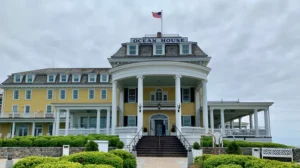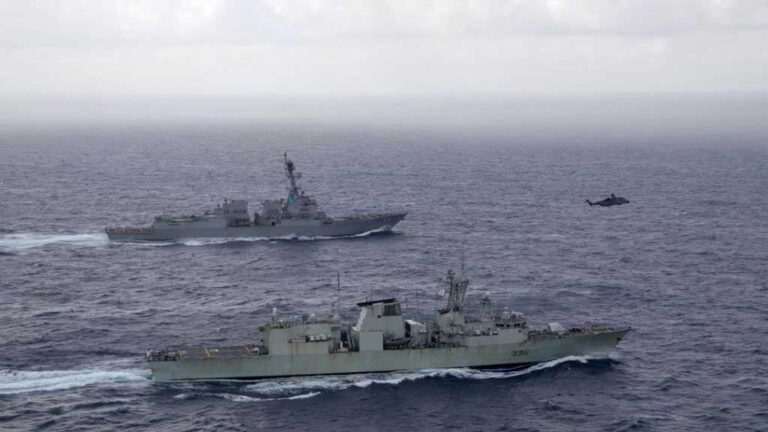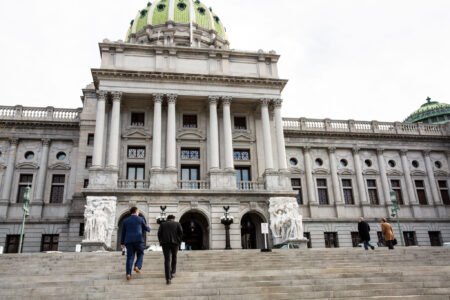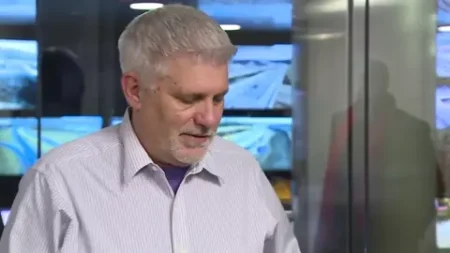Three U.S. Navy Aegis guided-missile destroyers are set to arrive off the coast of Venezuela within the next 36 hours as part of a new operation aimed at confronting Latin American drug cartels, according to two sources briefed on the matter. The ships involved are the USS Gravely, USS Jason Dunham, and USS Sampson. Their deployment is part of a broader U.S. strategy ordered by President Donald Trump, who has long advocated using military power to combat organized crime groups in the region.
A separate U.S. official confirmed that about 4,000 sailors and Marines will take part in the initiative, which forms a key component of the administration’s campaign to disrupt narcotics trafficking routes in the southern Caribbean. The mission will include not only warships but also advanced surveillance assets such as P-8 reconnaissance aircraft and at least one attack submarine. These assets will operate primarily in international waters and airspace, providing both intelligence and strike capabilities if authorized.
The official, who spoke on condition of anonymity, emphasized that the deployment will not be a short-term maneuver. Instead, it will unfold over several months, representing one of the most significant maritime commitments the U.S. has made in the region in recent years. While the stated focus is on intelligence gathering and surveillance, the official noted that the ships and aircraft could also serve as platforms for targeted military operations against cartel-linked infrastructure and leadership if such actions are deemed necessary.
President Trump has repeatedly described drug cartels as a direct threat to U.S. security. His administration recently escalated pressure on transnational criminal groups by officially designating several of them as global terrorist organizations. Among those targeted are Mexico’s notorious Sinaloa Cartel and Venezuela’s Tren de Aragua, both accused of fueling violence and contributing to instability across Latin America. By applying a terrorism designation, the administration has expanded its legal authority to pursue cartel members and associates more aggressively.
The move also aligns with Trump’s broader efforts to curb illegal migration and strengthen the U.S. southern border. Administration officials argue that dismantling cartel networks, which profit from smuggling drugs and people across borders, is essential to reducing the flow of narcotics and migrants into the United States. Deploying naval forces to the Caribbean is seen as a way to both disrupt smuggling routes and demonstrate American resolve to regional partners.
This is not the first time the U.S. military has been drawn into the fight against drug cartels. In recent months, the administration deployed additional warships and increased airborne surveillance missions over Mexico to monitor cartel activities more closely. These operations aim to improve intelligence gathering and provide U.S. law enforcement agencies with the data needed to track cartel logistics and financial flows.
Officials involved in the operation insist that while the deployment represents a show of force, it also has practical goals. Warships and surveillance planes will provide persistent monitoring of maritime trafficking routes often used by smugglers. At the same time, Marines aboard the destroyers will be prepared for boarding operations or interdiction efforts should cartel vessels be identified in international waters.
Critics of the administration’s approach argue that a military-heavy strategy could raise tensions in the region and potentially escalate confrontations with countries like Venezuela, whose government has long accused Washington of seeking to undermine its sovereignty. Still, supporters counter that the scale of the drug trade and its impact on U.S. communities justifies a robust response that goes beyond law enforcement alone.
For now, the arrival of the USS Gravely, USS Jason Dunham, and USS Sampson underscores Washington’s commitment to a sustained campaign against drug cartels operating in and around Venezuela. With thousands of personnel and some of the Navy’s most capable ships and aircraft committed, the deployment marks a significant step in President Trump’s pledge to treat cartel networks as threats to national security. The coming months will determine whether the presence of U.S. warships and surveillance assets in the Caribbean will effectively disrupt cartel operations or fuel greater regional tension.







